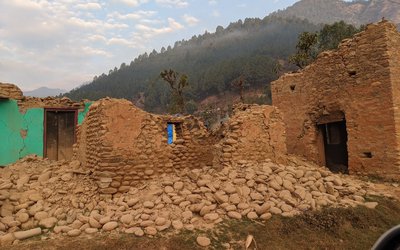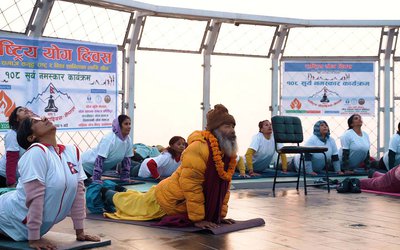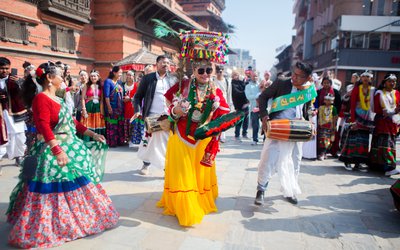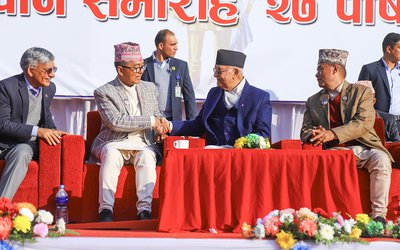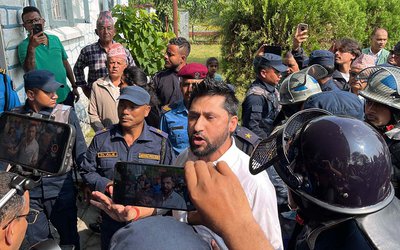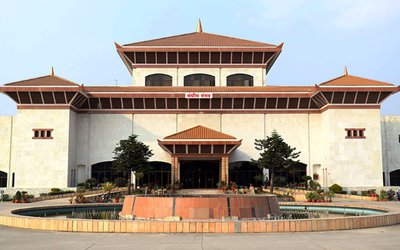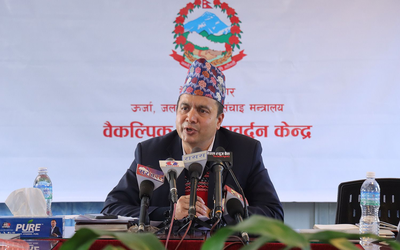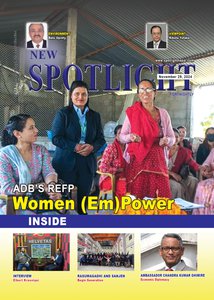
A wreath laying ceremony was organized jointly by Nepal-Bharat Millat Council, Embassy of India, Kathmandu, B. P. Koirala India-Nepal Foundation and Jame Masjid, Ghantaghar to commemorate the death anniversary of Begum Hazrat Mahal, on Tuesday April 07, 2015 at Jame Masjid, Kathmandu. Piyush Srivastava, Charge d’ Affaires of Embassy of India laid a wreath on the tomb of Begum Hazrat Mahal at Bagh Bazar.
During this occasion, he also remembered the contribution made by Begum Hazrat Mahal for India’s freedom-fight movement. Prior to this, Fathia was read by the students and Maulavi of Madarsha.
Begum Hazrat Mahal was the wife of then ruler of Awadh (Uttar Pradesh, India), Nawab Wajid Ali Shah. Her maiden name was Muhammadi Khanum and she was bestowed the title 'Hazrat Mahal' after the birth of her son Birjis Qadr. She was an Indian freedom fighter who rebelled against the British East India Company during the India’s first struggle for freedom in 1857. After her husband was exiled to Calcutta, she took charge of the affairs in the state of Awadh and seized control of Lucknow. She also arranged for her son, Prince Birjis Qadra, to become Wali (ruler) of Awadh; however, he was forced to abandon this role after a short reign. She finally found asylum in Nepal where she died in 1879.
The tomb of Begum Hazarat Mahal carries an inscription that she breathed her last in Nepal on April 7, 1879. Begum was buried in the courtyard of the ‘Hindustani Masjid’, the mosque she had built for her followers. Decades later, this structure was torn down and a new mosque, now known as the Jame Masjid, was built in its place. Today, Hazrat Mahal’s resting place lies in the mosque complex of Jame Masjid Kathmandu.
- GLOBAL IME BANK: Celebrating Eighteen Years of Progress
- Jan 13, 2025
- JALPADEVI CABLE CAR: IME Group's Latest Project
- Jan 12, 2025
- NIMB Achieves Accreditation With Green Climate Fund (GCF)
- Jan 10, 2025
- NATIONAL UNITY DAY: Unity Trail
- Jan 10, 2025
- TOURISTS ARRIVAL: Surpass A Million
- Jan 10, 2025

